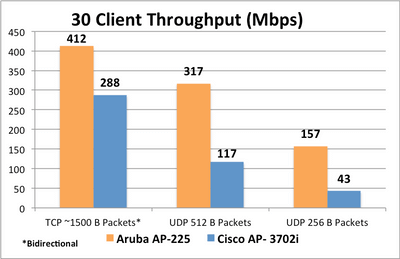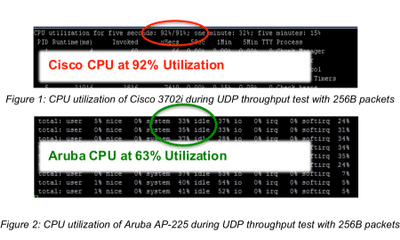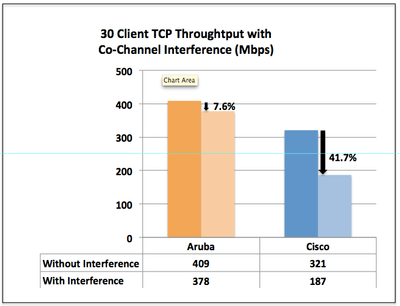Imagine pulling into your driveway in a brand new Jaguar and your neighbor says, “That’s a nice looking Ford Contour.” You laugh it off until he explains that the Jaguar X-Type has the same engine and underpinnings as the Ford Contour. That’s right. You’re a victim of badge engineering and some devious marketing practices.
When entering a market that demands high-performance, companies need to decide to either invest in building high-performance products or invest in marketing products as high-performance. Aruba faced a similar decision over 10 years ago and opted to invest in building high-performance products. A practice that is now part of the Aruba culture and the new 11ac AP-225 is a perfect example.
The AP-225 was designed from the ground up leveraging the latest innovations in antennae design, memory, and CPUs to meet today’s performance requirements. The engine of the AP-225 is a dual-core CPU with software that increases the efficiencies and overall speed of the AP. After all, faster CPUs mean more devices per AP.
Unlike Aruba, Cisco opted to invest in marketing a product as high-performance. Our friends on Tasman claim, and I quote, “When designing the Aironet 3700 Access Point, we fundamentally retooled our APs data plane for 802.11ac.” Well, when you look under the AP-3700 hood, you’ll see it has the same engine as the previous generation 802.11n AP-3600. A single-core 800MHz processor. As part of their retooling they also highlight the use of ‘generous amounts’ of DDR3 RAM to help offload processing from the CPU. Does this Band-Aid really make up for poor CPU performance?
To help you avoid becoming a victim of devious marketing practices, we conducted a series of tests that highlight the performance differences between purpose-built and badged engineering products. And just like with our previous performance tests, we posted the configs so you can replicate them on your own.
Check out the full report here.
The Drag Race: Single Client TCP Throughput
As can be seen from the results below, the Aruba AP-225 approached wired gigabit speeds with 882Mbps. That’s a 54% performance advantage over Cisco. Cisco will often talk about theoretical data rates, but what counts is the actual throughput.

The Grand Prix: Multi-Client Throughput
In this 30-client test, we used packet sizes that are common in today’s enterprise networks. As you can see from the results below, Cisco’s engine ran out of gas. Can you believe they are claiming this AP will support wave 2 11ac two years from now? Sounds like the Cisco marketing engine is spinning out of control.

These test cases can cause quite a high load on the CPU, so we monitored the utilization during the tests. The Aruba AP-225 delivered higher throughput in all test cases and the CPU peaks at a maximum utilization of 75% (>25% idle). The Cisco 3702i redlined as it approached 100% utilization.

The Baja 1000: Co-Channel Interference
Co-channel interference is a real-world issue and can occur when people fire-up their own “mobile hotspots” like the MiFi, or enable personal hotspot feature on their smartphones. Even in the presence of co-channel interference the Aruba AP-225 provided higher throughput than Cisco 3702i in clean spectrum. I guess it’s time to change the air filter.

Click here to download the full report.
Badge engineering led to the Jaguar X-Type being named one of the 50 Worst Cars of all time. Will the AP-3700 suffer the same fate?

